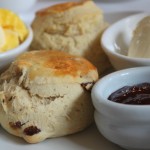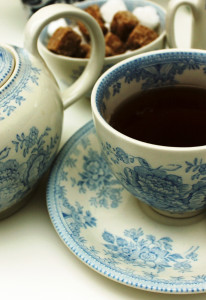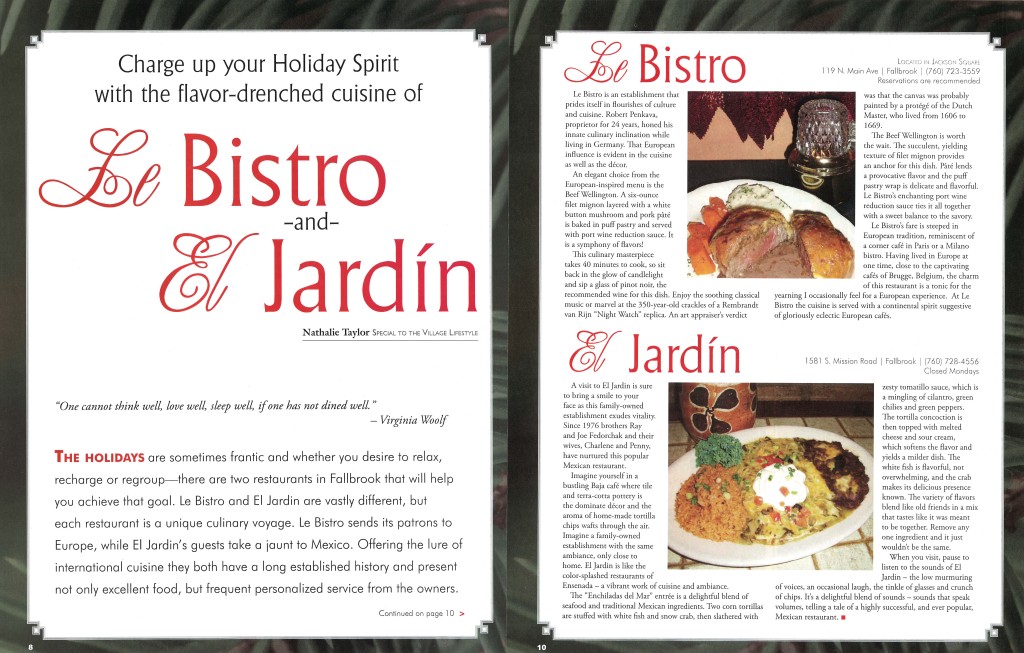
 FALLBROOK VILLAGE NEWS
FALLBROOK VILLAGE NEWS
Issue 31, Volume 17.
Nathalie Taylor
Special to the Village News
“There are few hours in life more agreeable than the hour dedicated to the ceremony known as afternoon tea.” ― Henry James
Taking tea is a subdued tradition – a gentle treat. “Tea” – the word itself is a graceful, almost non-word, the pronunciation is so brief.
The allure of formal tea enticed me when I was about twelve. That is when I first took tea with the women of my family in Buffums’, an elegant department store in Long Beach. I remember the petit fours – perfectly crafted cakes that looked like doll cakes. They were only an inch or so high, but four layers thick, with icing between spongy layer after spongy layer.
Since that first experience I have enjoyed tea in some captivating settings – from the tame and proper Harrod’s in London where scents of frosted cakes and smoked salmon sandwiches swirl about exquisite tables – to a crowded room above a bustling rug and copperware bazaar in Kusadasi, Turkey, where the air was tinged with a swirl of dust, tobacco, fruit and the pungent scent of dyed fabric baking in the hot sun.
At Harrod’s the tea I chose was a robust, but conventional, English Breakfast tea served in a pristine white bone china cup. In Kusadasi I timidly sipped an unnamed, but aromatic tea from a tall thin glass with a base of dented metal.
I have come to realize that the ceremony of “Afternoon Tea” can be varied with the country and region, but the one constant is that aromatic beverage coaxed from leaves that bear the name, “tea.”
Most tea rooms in England offer a selection of up to ten different blends of tea, and I have sampled many, but always return to English Breakfast tea. This rich and bold flavored tea is a blend of various black teas. Add a bit of milk to the steamy potion and you have a perfect cup of tea.
The Orangery at London’s Kensington Palace was built in 1704 for Queen Anne and was the scene of many a court affair. In 1988, when I first pressed my nose to one of the tall Orangery windows, the building was empty and desolate, with a vague aura of past glory. The sun was still streaming through the window making patterns on the drab cement. I wanted to sit in one of the sun patterns and sip a cup of tea.
Years later, when I returned to the palace with my niece, Shannon, I was confident that my musings must have passed through the air waves – the Orangery, once again, was filled with the soft murmur of voices. It had become a graceful tearoom with white columns and a cheery interior.
On a recent trip to London with my mother, Barbara, we enjoyed an elegant Afternoon Tea at the Orangery where subdued light softly illuminated the perfectly sliced tea sandwiches; and the scent of fragrant, exotic teas transported us to another era. My “Mum,” as I affectionately call her when we are in England, is of English and Scottish descent, so teatime is naturally a lure, as well as a delight, for her.
In the Orangery, a hushed atmosphere pervaded despite the many guests. We sipped tea from dainty gold-rimmed bone china cups and relished the soft orange and currant scones spread with clouds of Cornish clotted cream. A delicate chocolate truffle cake with crème fraiche was a fitting finale.
At the British Museum in London, Mum and I discovered the Court Restaurant situated under an impressive curved steel and glass roof. The museum’s Afternoon Tea had more of an international flair and offered “savoury” selections. I chose a marinated bavette steak. This cut of beef possessed intense flavor, but a tender texture.
At the Court Restaurant the trappings of teatime – tea cups, saucers and tea pots, are vintage and lend a charming air to the experience. Silverware with Bakelite handles, as well as rough linen napkins in hand-dyed colors, are of another era.
In southwest England lies the city of Bath. The Grand Pump Room was christened by the Duchess of York in 1795, which doesn’t seem so long ago when compared to the 2,000-year-old Roman baths that bubble nearby. The room was mentioned in the Jane Austen novel, “Northhanger Abbey” and still possesses a stately mystique.
Searcy’s restaurant at the Grand Pump Room offers an elegant array of delicacies for Afternoon Tea. Mum and I enjoyed our meal in the Georgian-style hall under a massive crystal chandelier worthy of a palace. Plush, red curtains were draped across the tall leaded glass windows framed by white Corinthian columns. The ceiling was so high that voices got lost.
A three-tiered porcelain tea tray held fresh currant scones, sandwiches and assorted pastries. True to tradition, crusts were not allowed on the tea sandwiches, which included egg and cress, as well as smoked salmon and thinly sliced cucumber.
Mum and I savored every bite, every view, and every sip of that quintessential English beverage called “tea.” We lingered long after the last pastry was gone – imagining Jane Austen, with a swish of her taffeta dress, gracefully twirling under the glittering chandelier.
Continue Reading

